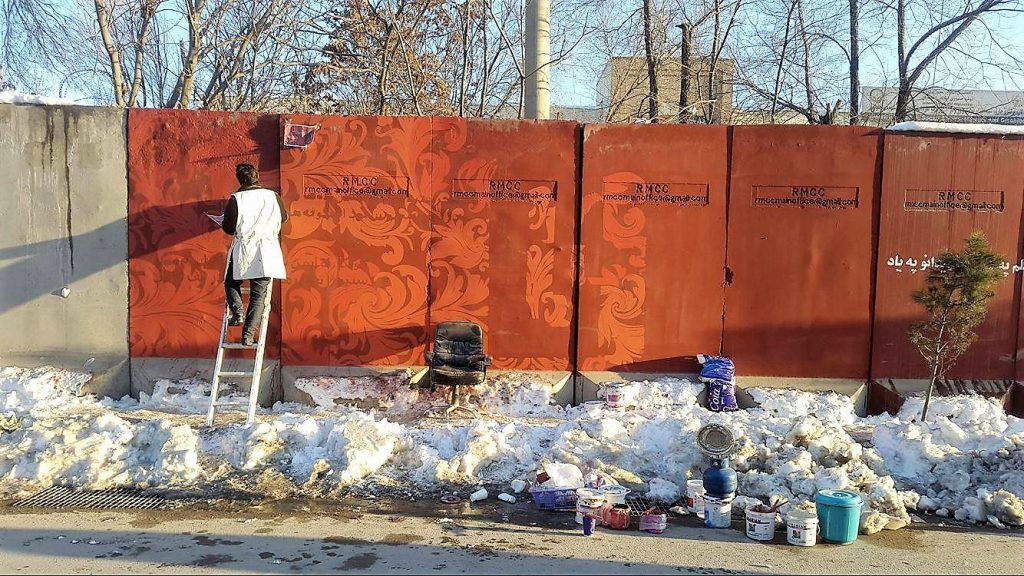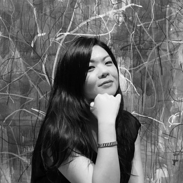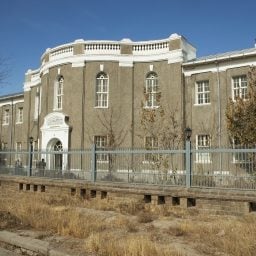To Abdul Wasi Rahraw Omarzad, fleeing Afghanistan and starting a new life in Italy comes with immense responsibility. The artist and curator wants to continue with his work to promote and develop contemporary art from his home country and connect artists across the growing Afghan diaspora, after the Taliban seized control of Kabul.
“My responsibility, when I was in Afghanistan, was to develop contemporary art, to encourage young talented artists and also to work with women. I still have that responsibility,” Omarzad told Artnet News, adding that he now also seeks to help other artists and culture workers escape Afghanistan. “I have to bring out the artists from CCAA [Center for Contemporary Arts Afghanistan] and artists from Kabul. There are many artists who are searching for ways to get out.”
The former fine arts professor at Kabul University arrived in Italy last Friday, October 15, with his wife, the artist Manizh Nasrullah Omarzad, their daughters Worangha and Yousra Omarzad, as well as his sister Maliha Salam. They had remained in Afghanistan until early October and fled over land.
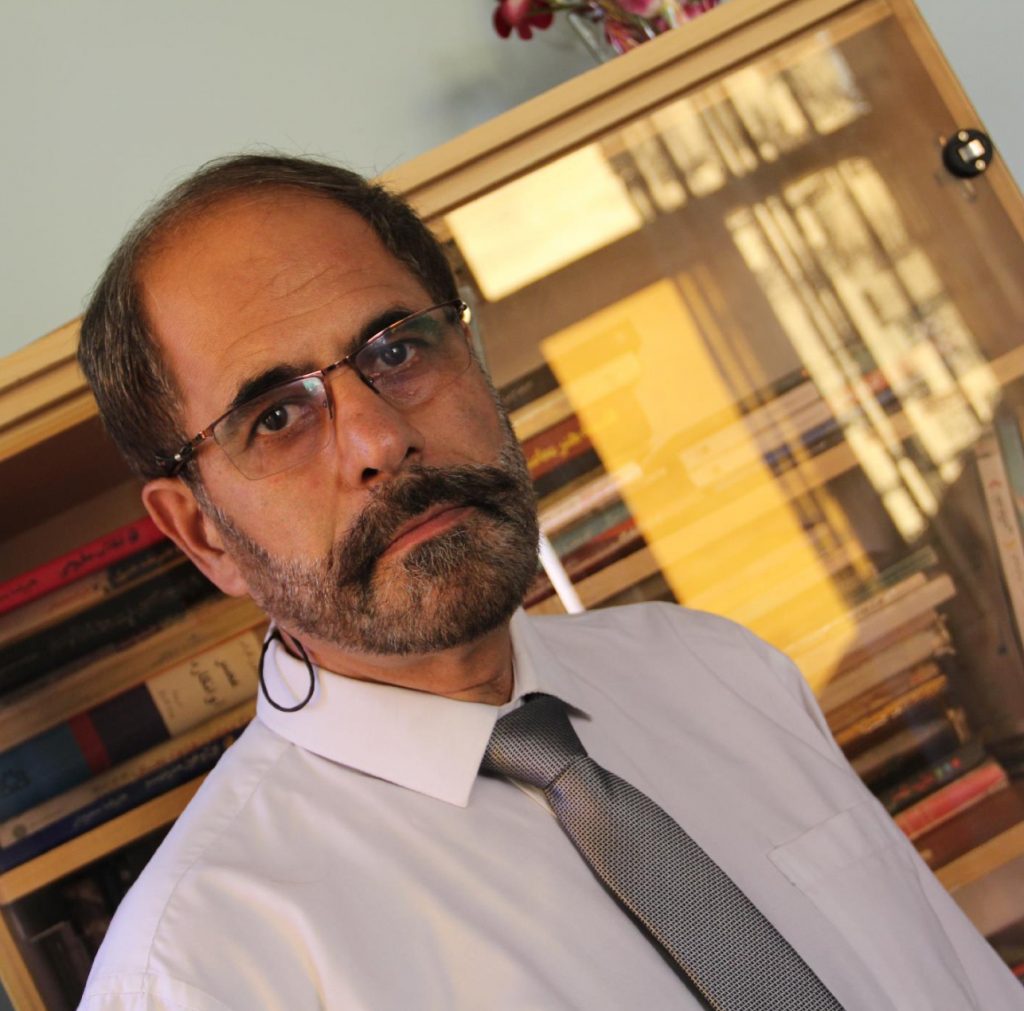
Rahraw Omarzad. Courtesy of Castello di Rivoli.
The escape plan, however, would not have been possible without a concerted effort from the Castello di Rivoli contemporary art museum in Turin as well as the Italian authorities, primarily the Ministry of Foreign Affairs and the Ministry of Culture.
Carolyn Christov-Bakargiev, the director of Castello di Rivoli, had worked closely with Omarzad when she was the artistic director of Documenta 13, which featured a section in Kabul and Bamiyan in 2012. After the fall of Kabul in mid-August, Christov-Bakargiev was alerted by Afghan artists that Omarzad was still in the country.
Because he is an artist and curator with international standing—who helped establish Kabul’s non-profit Center for Contemporary Arts Afghanistan in 2004 and promoted the Women’s Center for the Arts—it was feared Omarzad could become an easy target for the Taliban, which has a poor reputation of banning cultural activities and destroying cultural heritage.
Christov-Bakargiev then reached out to the professor and helped arrange for him and his family to leave Kabul. Eventually, under the sponsorship of the Castello di Rivoli, which offered him an artist residency, Omarzad and his family were granted asylum by the Italian authorities. The Accademia Albertina in Turin has also offered him a teaching position, and the MAXXI Museo nazionale delle arti del XXI secolo and the Palazzo delle Esposizioni in Rome have also offered support. Christov-Bakargiev hoped that Omarzad would receive project commissions and invitations while contributing to the cultural life of Italy.
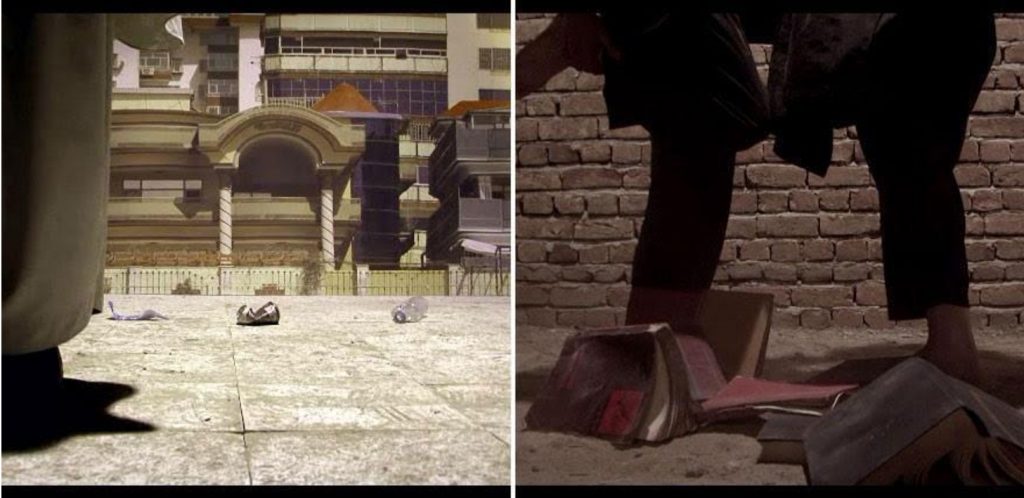
Rahraw Omarzad’s Gaining and Losing (2012). Courtesy of the artist and Castello di Rivoli.
“I felt very happy when I landed in Italy,” Omarzad said, adding that the country’s rich history has always played a key part of his studies in art. The situation in Afghanistan, however, remains dire. “Art in general and women in particular are in [a] very difficult situation. The Taliban rejects creativity and art, especially art that is figurative and depicts people or animals. From here on, art in Afghanistan will have to be underground and abstract.”
Omarzad, who was born in Kabul in 1964, is no stranger to living in exile. During the first Taliban regime, he fled the country to Peshawar in Pakistan where he worked as an artist and a teacher. The experience inspired him to publish and edit Gahnama-e-Hunar, the only art magazine in the country.
How this new episode of exile will turn out is yet to be seen, but Omarzad already has a few aims he hopes to achieve, such as discussing migration and the experience of fleeing from conflict with his students, as well as building bridges with the Afghan diaspora to put contemporary art from his home country in the global spotlight.
“I also want to be more active as an artist here. I had little time to think about my own art when I was in Afghanistan,”Omarzad said. “These goals make me think where I should stay…and how to use all the possibilities to connect and develop contemporary art in Afghanistan.”
